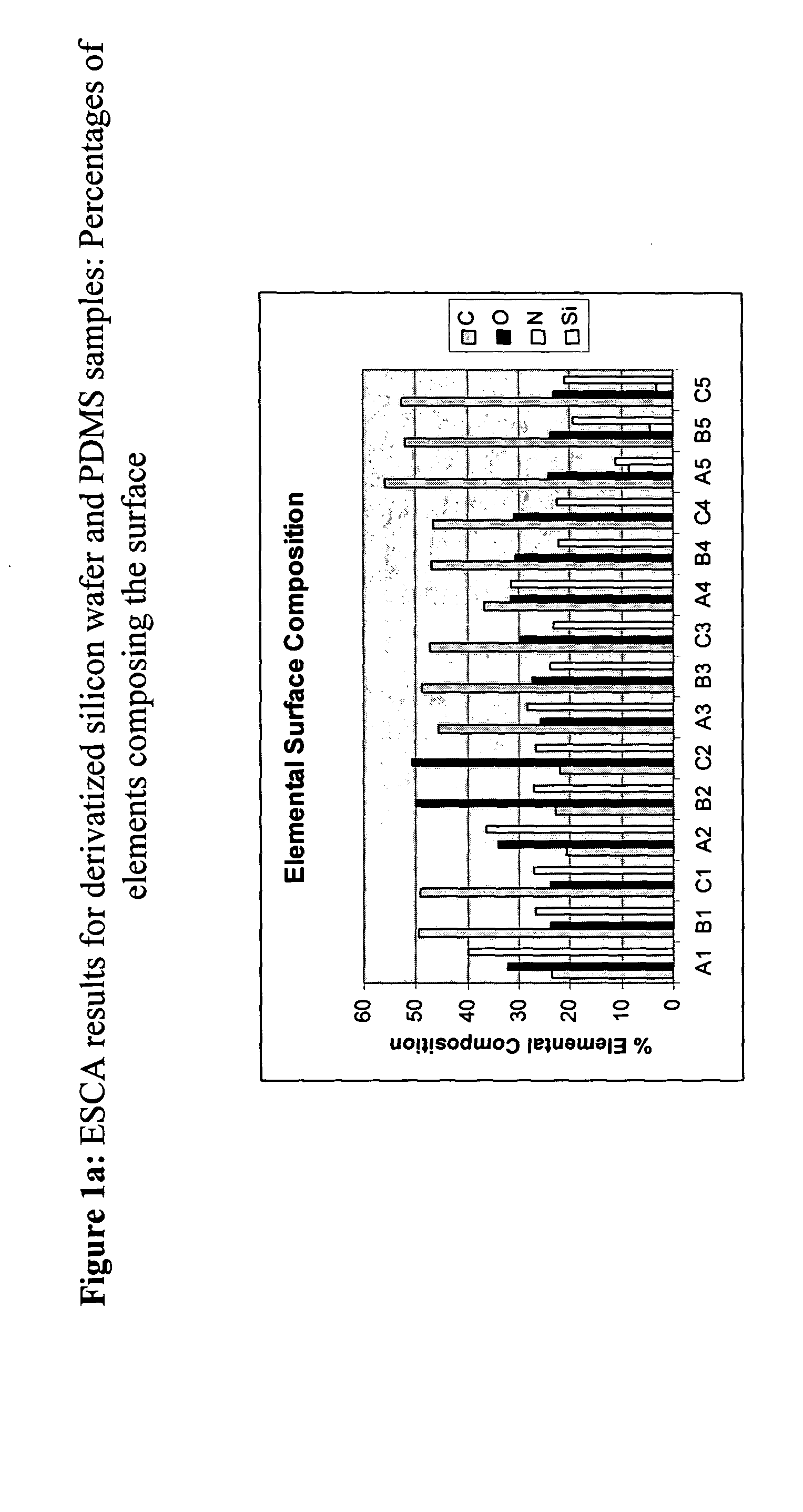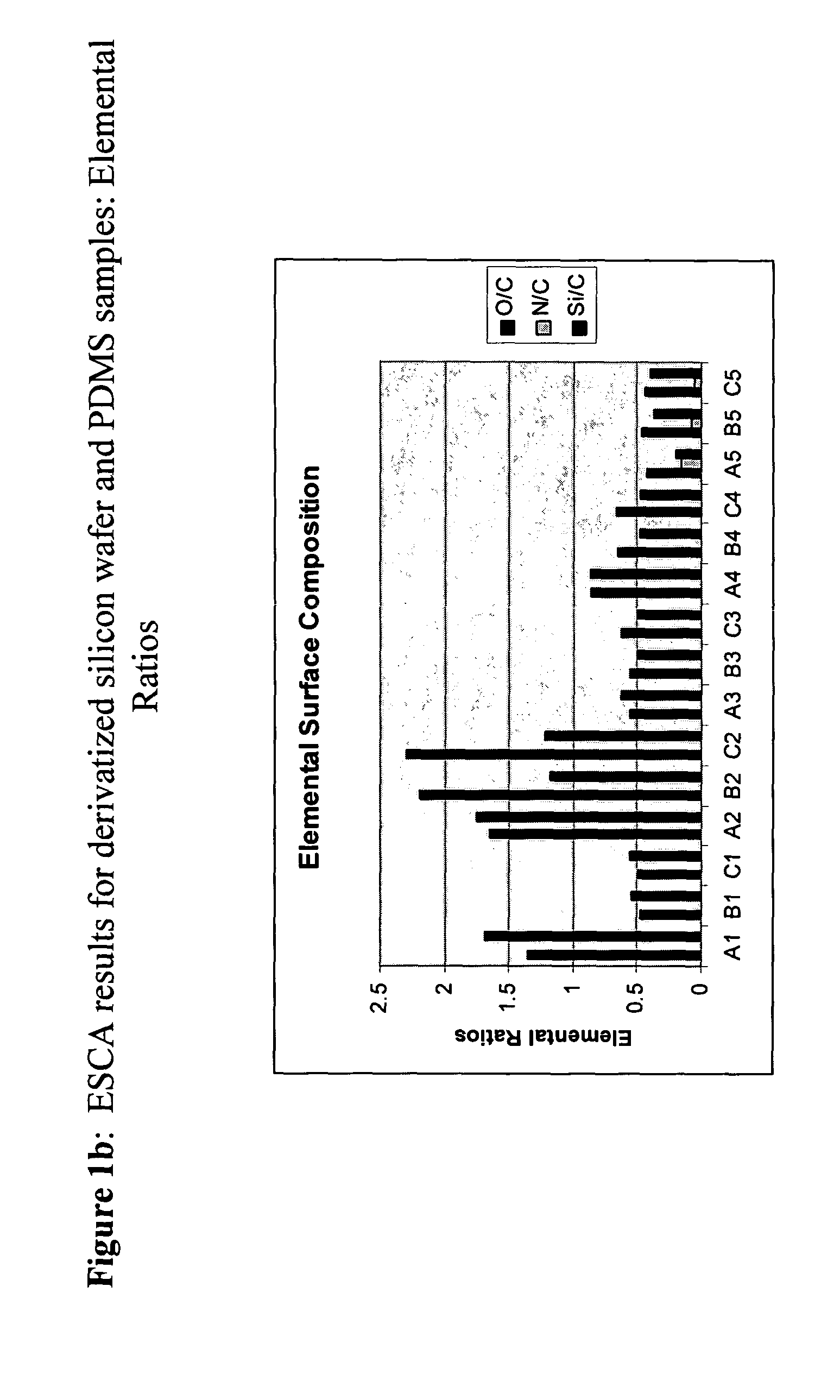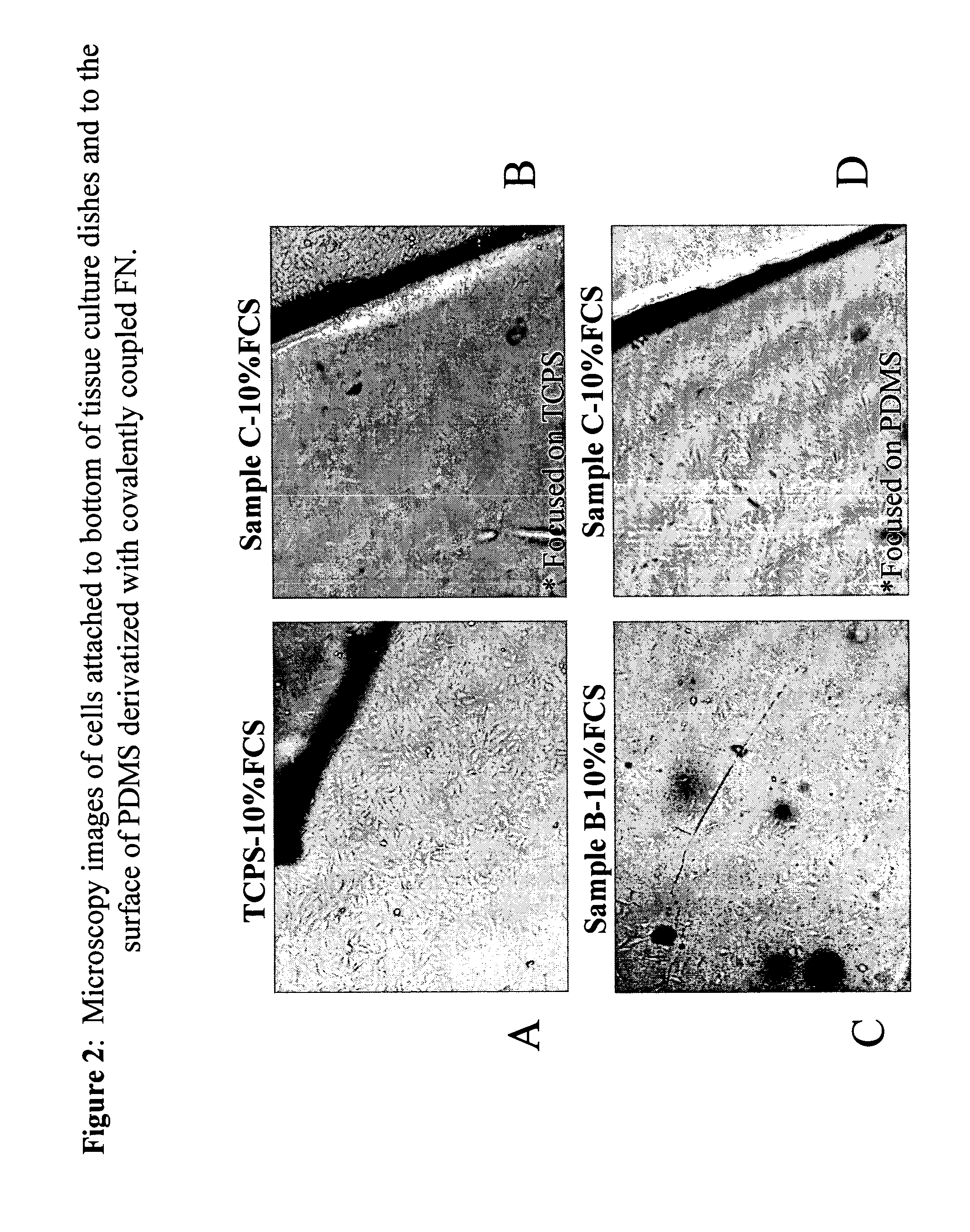Methods of surface modification to enhance cell adhesion
- Summary
- Abstract
- Description
- Claims
- Application Information
AI Technical Summary
Problems solved by technology
Method used
Image
Examples
example 1
Preparation of a Modified Cell Culture Surface
[0046] Treatment: An oxygen biosensor plate (BD) which comprises a luminescent dye (4,7,-diphenyl-1,10-phenanthroline ruthenium II chloride) embedded in polydimethyl siloxane (PDMS), was UVO treated, followed by chemical treatment to create a carboxyl-terminated self-assembled monolayer, according to the methods of Efimenko, K., et al., J Colloid Interface Sci., 254(2): 306-315 (2002).
[0047] Activation: Carboxyl groups exposed on the PDMS surface were activated using ethyldimethylaminopropyl-carbodiimide (EDC) in the presence of N-hydroxysulfosuccinimide (sulfo-NHS) to stabilize the hydrolytically instable active ester (o-acylisourea) intermediate. A 2 mg / ml solution of both EDC and sulfo-NHS in 2-[N-Morpholino]ethane sulfonic acid (MES) buffer was used for this activation step. Surfaces were activated for about 5 minutes before continuing with the coupling step.
[0048] Coupling: Collagen type VI was covalently coupled to the activated...
example 2
Modifying Silicon with Laminin
[0049] One silicon wafer sample (Wacker Siltronix Corporation, Portland, Oreg.) and 2 different PDMS samples bearing chlorosilane based self-assembled monolayers with —COOH terminal groups were provided as follows:
[0050] Sample 1: Silicon wafer; Sample 2: duplicate of Sample 1; Sample 3: PDMS sample 1; Sample 4: duplicate of Sample 3; Sample 5: PDMS sample 2; Sample 6: duplicate of Sample 5.
[0051] The —COOH groups were activated by adding a solution containing 4 mg / ml 1-ethyl-3-(3-dimethylaminopropyl)carbodiimide hydrochloride (EDC) and N-hydroxysulfosuccinimide (sulfo-NHS) and letting the sample soak in the EDC / sulfo-NHS solution for about 5 minutes. Then a 200 μg / ml mouse laminin solution was added, and the samples were left soaking in the lamin / EDC / sulfo-NHS solution overnight for the coupling reaction to take place. Samples were removed from the laminin / EDC / sulfo-NHS solution the next morning, rinsed first with a salt / AcOH / water (40 ml 5M NaCl / 2 ...
example 3
Modifying Silicon with Fibronectin
[0054] The following flexible polymer matrix had surfaces prepared as follows:
[0055] Sample A-1 (silicon wafer)—as received from the manufacturer (i.e., untreated); Sample B-1 (PDMS 1)—untreated; Sample C-1 (PDMS 2)—untreated
[0056] Sample A-2 (silicon wafer)—UVO-treated; Sample B-2 (PDMS 1)—UVO-treated; Sample C-2 (PDMS 2)—UVO treated;
[0057] Sample A-3 (silicon wafer)—silicon with SAM; Sample B-3 (PDMS 1)—silicon with SAM; Sample C-3 (PDMS 2)—silicon with SAM.
[0058] Sample A-4 (silicon wafer)—oxidized terminal (vinyl) group using potassium permanganate (KMnO4); Sample B-4 (PDMS 1-28 kDa)—oxidized; Sample C-4 (PDMS 2-17.2 kDa)—oxidized;
[0059] The oxidized samples were rinsed with ethanol and water, then activated with an aqueous solution containing 4 mg / ml containing EDC / sulfo-NHS for approximately 5 minutes after which an equal amount of 100 μg / ml containing human fibronectin (Fn) solution was added. The samples were left on the bench overnigh...
PUM
 Login to View More
Login to View More Abstract
Description
Claims
Application Information
 Login to View More
Login to View More - R&D
- Intellectual Property
- Life Sciences
- Materials
- Tech Scout
- Unparalleled Data Quality
- Higher Quality Content
- 60% Fewer Hallucinations
Browse by: Latest US Patents, China's latest patents, Technical Efficacy Thesaurus, Application Domain, Technology Topic, Popular Technical Reports.
© 2025 PatSnap. All rights reserved.Legal|Privacy policy|Modern Slavery Act Transparency Statement|Sitemap|About US| Contact US: help@patsnap.com



